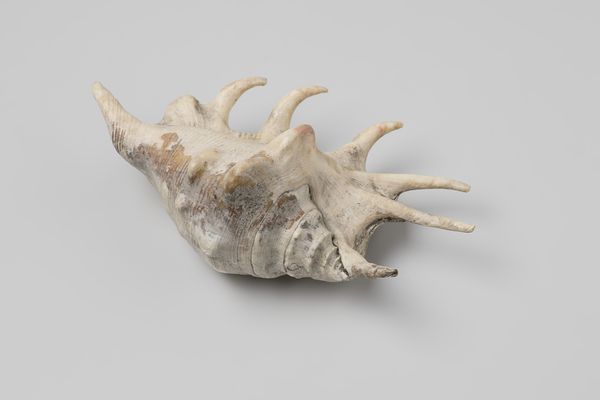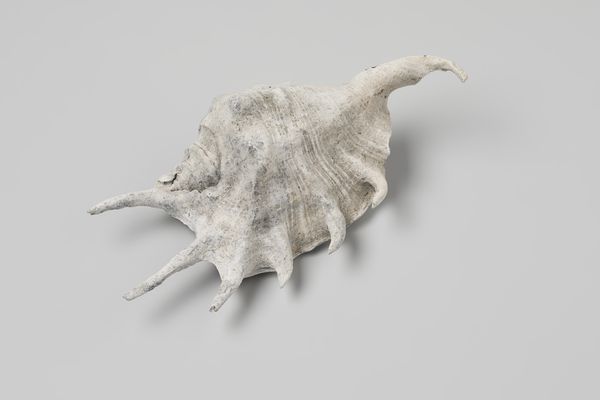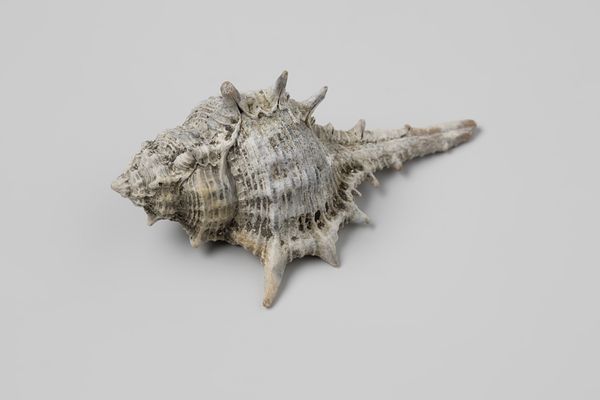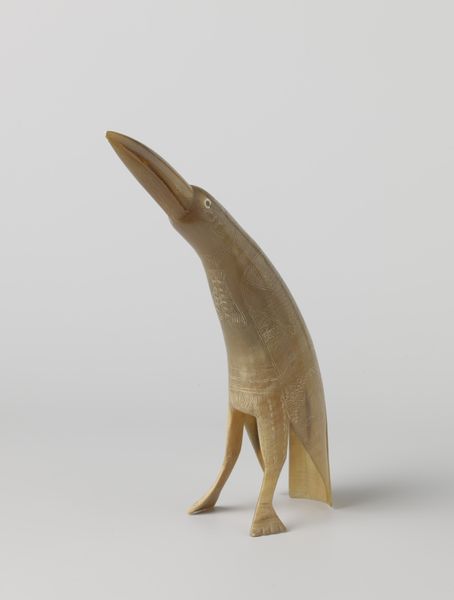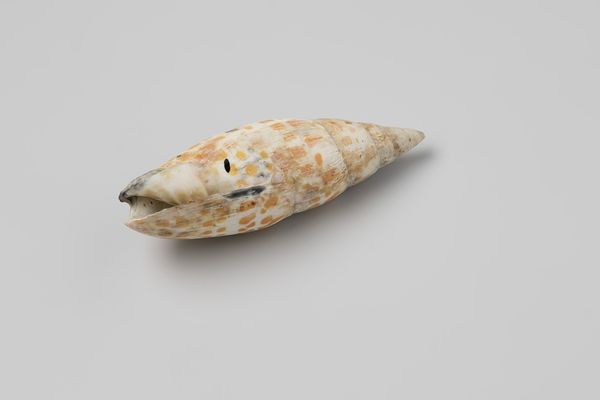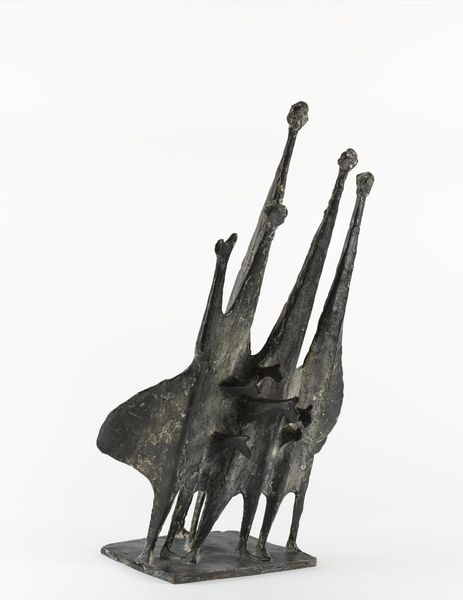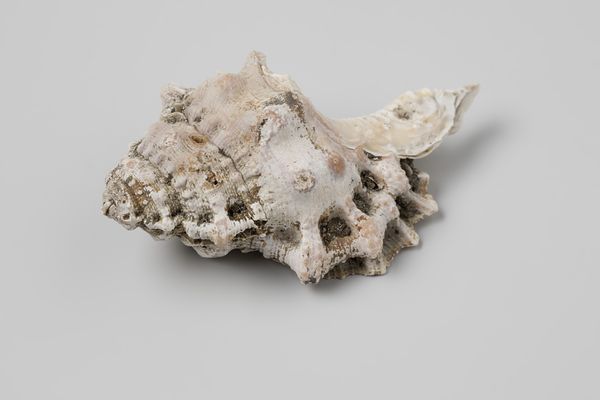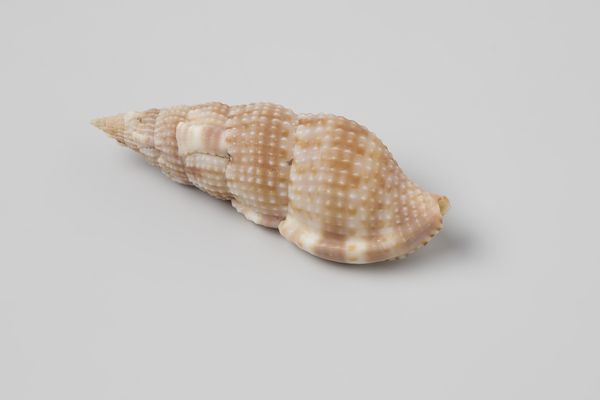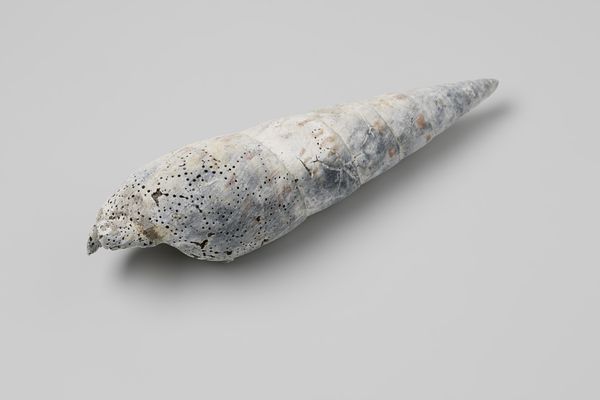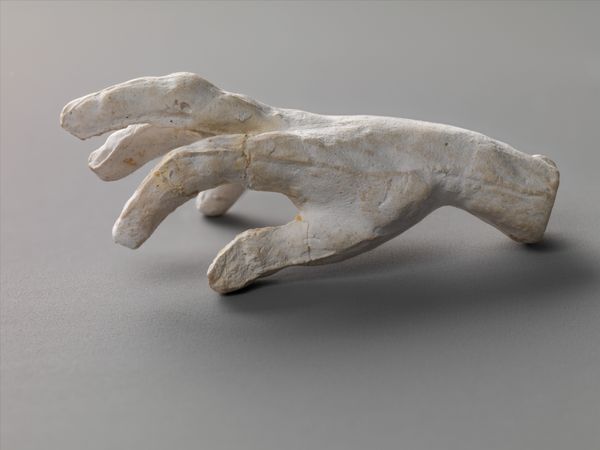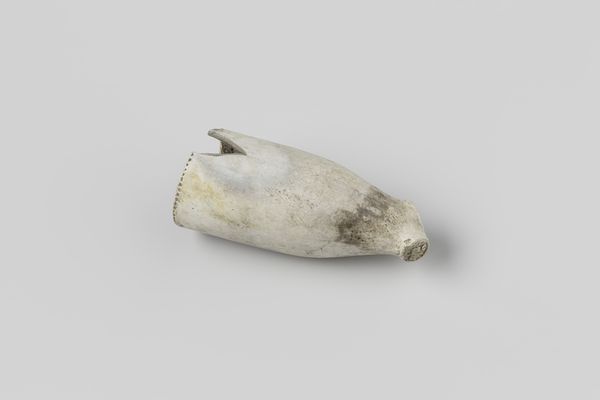
Lambis lambis shell from the wreck of the Dutch East India ship Witte Leeuw before 1613
0:00
0:00
nietvantoepassing
Rijksmuseum
found-object, bronze
#
still-life-photography
#
found-object
#
bronze
#
naturalism
Dimensions: length 12.9 cm, width 6 cm, height 4.7 cm
Copyright: Rijks Museum: Open Domain
Editor: So, this is a Lambis lambis shell, recovered from the wreck of the Witte Leeuw, a Dutch East India ship that sank before 1613. It's currently in the Rijksmuseum. What strikes me most is the fragility it suggests, yet it survived centuries underwater. What do you make of it? Curator: It's fascinating how a seemingly simple object can hold so much historical weight. Consider the Witte Leeuw. It wasn't just any ship; it was a symbol of Dutch colonial power and trade in the early 17th century. This shell, therefore, becomes a tangible link to that era. Where do you think such natural objects were being transported from, and by whom, and what would be the socio-political context to transport the item and put it on display today? Editor: I suppose it was a part of the global trade network, maybe carried back to Europe as a curiosity or a valuable specimen. Displaying it now forces us to confront the legacy of colonialism, right? Curator: Precisely! It highlights the complicated relationship between museums, colonial histories, and the power dynamics inherent in collecting and displaying objects from other cultures. The shell represents not only a piece of natural history, but also human ambition and exploitation. Does viewing the object displayed within a modern institution alter how you consider it as an "art object"? Editor: I hadn’t thought about the museum’s role in ‘transforming’ its meaning that way. But viewing it divorced from its original context makes it more of an artifact about a specific moment in time, but also points out a continuous political situation through the ages to this very day, with ever shifting perspectives of value, meaning, and power. Curator: And its display in a prominent museum like the Rijksmuseum shapes public perception. This humble shell becomes a lens through which we can critically examine the broader narrative of colonialism and its enduring impact on our world today. A lens focusing on power, agency, the violence associated with its appropriation, transport and present situation. Editor: Thanks, that gives me a lot to think about regarding not just art but society too! Curator: You're very welcome. Understanding the artwork as a political tool changes our perspective forever.
Comments
No comments
Be the first to comment and join the conversation on the ultimate creative platform.
